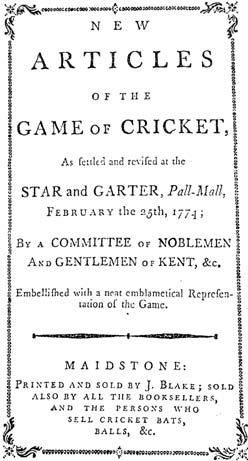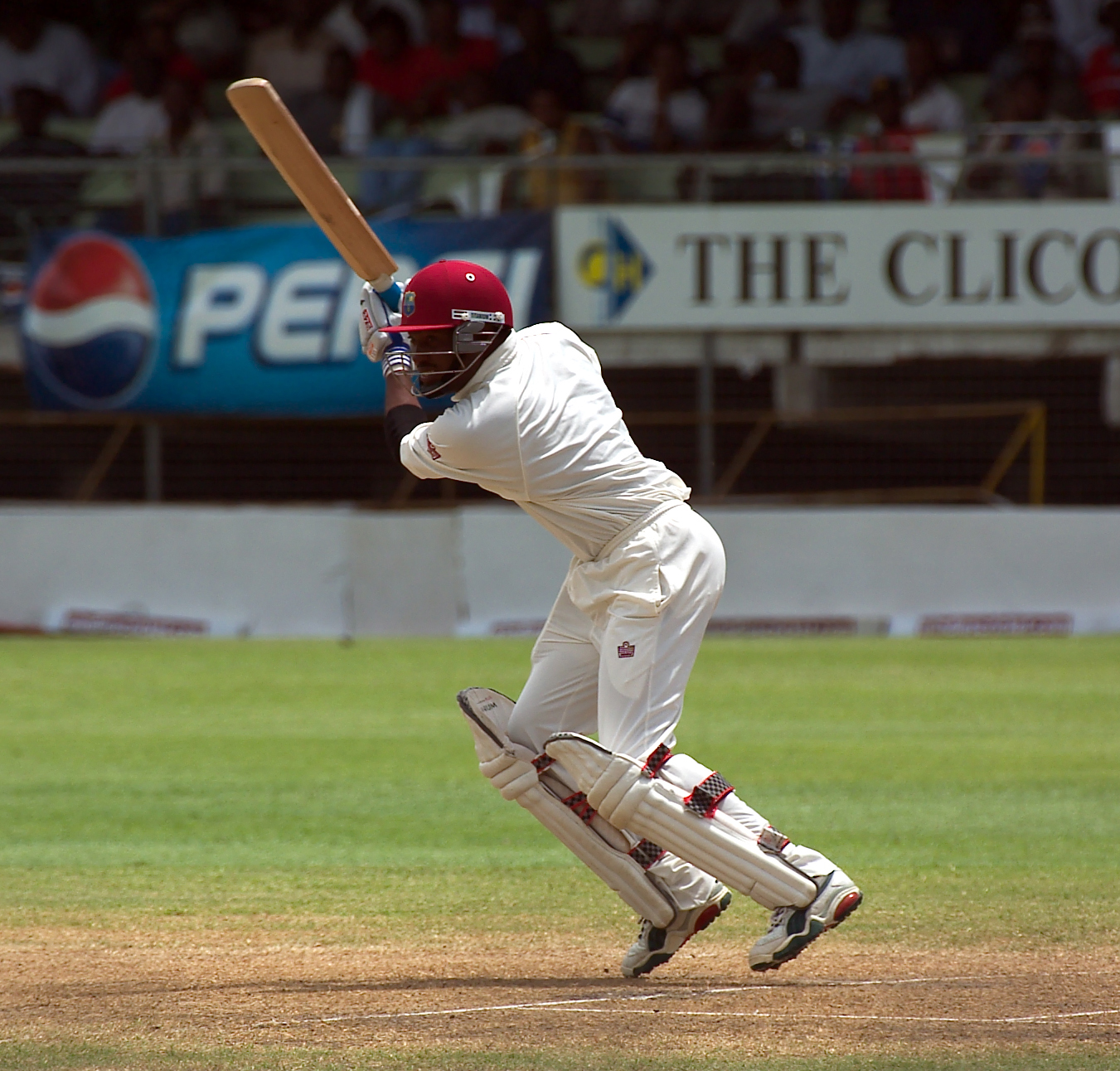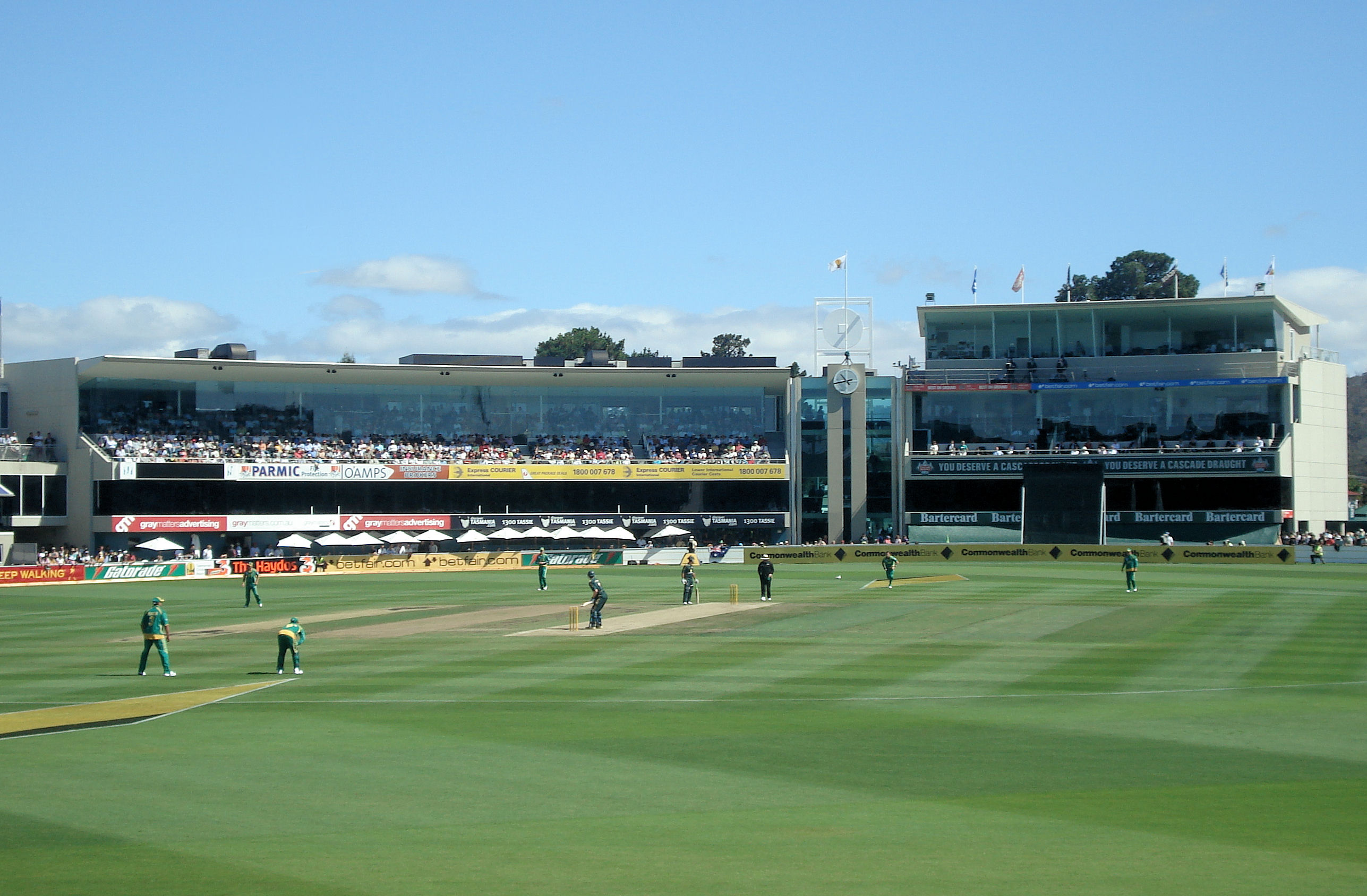|
Nonstriker
In cricket, batting is the act or skill of hitting the cricket ball, ball with a cricket bat, bat to score runs (cricket), runs and prevent the dismissal (cricket), loss of one's wicket. Any player who is currently batting is, since September 2021, officially referred to as a batter (historically, the terms "batsman" and "batswoman" were used), regardless of whether batting is their particular area of expertise. Batters have to adapt to various conditions when playing on different cricket pitches, especially in different countries - therefore, as well as having outstanding physical batting skills, top-level batters will have quick reflexes, excellent decision-making and be good strategists. During an innings two members of the batting side are on the pitch at any time: the one facing the current delivery from the bowler is called the striker, while the other is the non-striker. When a batter is dismissal (cricket), out, he is replaced by a team-mate. This continues until the ... [...More Info...] [...Related Items...] OR: [Wikipedia] [Google] [Baidu] |
Cricket Pitch
In the game of cricket, the cricket pitch consists of the central strip of the cricket field between the wickets. It is long (1 chain) and wide. The surface is flat and is normally covered with extremely short grass, but can be completely dry or dusty soil with barely any grass or, in some circumstances (that are rarely seen in high level cricket), made from an artificial material. Over the course of a cricket match, the pitch is not repaired or altered other than in special circumstances - meaning that it will change condition. Any grass on the pitch in the game's first over, for example, may have disappeared by twentieth over due to wear. As almost all deliveries bowled will bounce off the pitch towards the batter, the state and type of a cricket pitch can significantly affect the outcome of a match. For example, a dusty, very dry, pitch will favour spin bowling because the ball will grip more on a dusty pitch - giving the team with the superior spin bowlers a significan ... [...More Info...] [...Related Items...] OR: [Wikipedia] [Google] [Baidu] |
Innings
An innings is one of the divisions of a cricket match during which one team takes its turn to bat. Innings also means the period in which an individual player bats (acts as either striker or nonstriker). Innings, in cricket, and rounders, is both singular and plural; this contrasts with baseball and softball in which the singular is "inning". Origin The earliest known record of the term concerns a match in August 1730 at Blackheath, Kent between a Kent side and London Cricket Club. The London-based ''St. James Evening Post'' reported: "'Twas thought that the Kentish champions would have lost their honours by being beat at one innings if time had permitted". Usage in cricket An innings is one of the divisions of a match during which one team takes its turn to bat, and is said to be "in to bat". Innings is the subject of Law 13 in the ''Laws of Cricket''. * In a first-class match, there are up to four innings with each team due to bat twice (in practice, this is not always the c ... [...More Info...] [...Related Items...] OR: [Wikipedia] [Google] [Baidu] |
Sachin Tendulkar Cropped
Sachin may refer to: * Sachin (given name), an Indian given name, including a list of people with the name ** Sachin (actor) (born 1957), Indian actor and filmmaker ** Sachin Tendulkar (born 1973), Indian cricketer Films * ''Sachein'', a 2005 Tamil film directed by John Mahendran, sometimes spelled "''Sachin''" * ''Sachin: A Billion Dreams'', a 2017 Indian biographical film of Sachin Tendulkar * Sachin (film), ''Sachin'' (film), a 2018 Malayalam film directed by Santhosh Nair Places * Sachin, Pas-de-Calais, a town in northern France * Sachin, Gujarat, a suburban area of Surat in India **Sachin INA, a town and an industrial notified area ** Sachin railway station, a small railway station in Surat district, Gujarat * Sachin State, a princely state of India from 1791 to 1948 See also * {{Disambiguation, geo ... [...More Info...] [...Related Items...] OR: [Wikipedia] [Google] [Baidu] |
Laws Of Cricket
The ''Laws of Cricket'' is a code which specifies the rules of the game of cricket worldwide. The earliest known code was drafted in 1744 and, since 1788, it has been owned and maintained by its custodian, the Marylebone Cricket Club (MCC) in London. There are currently 42 Laws (always written with a capital "L") which outline all aspects of how the game is to be played. MCC has re-coded the Laws six times, the seventh and latest code being released in October 2017. The 2nd edition of the 2017 Code came into force on 1 April 2019. The first six codes prior to 2017 were all subject to interim revisions and so exist in more than one version. MCC is a private club which was formerly cricket's official governing body, a role now fulfilled by the International Cricket Council (ICC). MCC retains copyright in the Laws and only the MCC may change the Laws, although usually this is only done after close consultation with the ICC and other interested parties such as the Association of Crick ... [...More Info...] [...Related Items...] OR: [Wikipedia] [Google] [Baidu] |
Slip (cricket)
In cricket, a slip fielder (collectively, a ''slip cordon'' or ''the slips'') is placed behind the batsman on the off side of the field. They are placed with the aim of catching an edged ball which is beyond the wicket-keeper's reach. Many teams employ two or three slips (numbered from the slip fielder closest to the wicket-keeper: first slip, second slip, etc.). A ''floating slip'' is sometimes employed, usually in limited over games, who patrols an area in the slip cordon that would ordinarily be occupied by more than one fielder. The slip cordon's distance from the batsman increases with the pace of the bowler; generally they will be marginally further away from the batsman than the wicket-keeper is. Because of the resulting geometry, spin bowlers generally have fewer slips in the cordon than a fast bowler would in an equivalent game situation. As fielding in the slips requires quick reflexes and sure hands, usually the most adept catchers in the team will make up the s ... [...More Info...] [...Related Items...] OR: [Wikipedia] [Google] [Baidu] |
Bat (cricket)
A cricket bat is a specialised piece of equipment used by batters in the sport of cricket to hit the ball, typically consisting of a cane handle attached to a flat-fronted willow-wood blade. It may also be used by a batter who is making ground to avoid a run out, by holding the bat and touching the ground with it. The length of the bat may be no more than 38 inches (96.5 cm) and the width no more than 4.25 inches (10.8 cm). Its use is first mentioned in 1624. Since 1979, a law change has provided that cricket bats can only be made from wood. Construction The ''blade'' of a cricket bat is a wooden block that is generally flat on the striking face and with a ridge on the reverse (back) which concentrates wood in the middle where the ball is generally hit. The bat is traditionally made from willow wood, specifically from a variety of white willow called cricket bat willow (''Salix alba'' var. ''caerulea''), treated with raw (unboiled) linseed oil, which has a protective ... [...More Info...] [...Related Items...] OR: [Wikipedia] [Google] [Baidu] |
North Middlesex CC V Hampstead CC At Crouch End, Haringey, London 19
North is one of the four compass points or cardinal directions. It is the opposite of south and is perpendicular to east and west. ''North'' is a noun, adjective, or adverb indicating direction or geography. Etymology The word ''north'' is related to the Old High German ''nord'', both descending from the Proto-Indo-European unit *''ner-'', meaning "left; below" as north is to left when facing the rising sun. Similarly, the other cardinal directions are also related to the sun's position. The Latin word ''borealis'' comes from the Greek '' boreas'' "north wind, north", which, according to Ovid, was personified as the wind-god Boreas, the father of Calais and Zetes. ''Septentrionalis'' is from ''septentriones'', "the seven plow oxen", a name of ''Ursa Major''. The Greek ἀρκτικός (''arktikós'') is named for the same constellation, and is the source of the English word ''Arctic''. Other languages have other derivations. For example, in Lezgian, ''kefer'' can mean b ... [...More Info...] [...Related Items...] OR: [Wikipedia] [Google] [Baidu] |
Shivnarine Chanderpaul
Shivnarine "Shiv" Chanderpaul (born 16 August 1974) is a Guyanese cricket coach and former captain of the West Indies cricket team. Considered one of the greatest batsmen of his era, Chanderpaul is the first Indo-Caribbean to play 100 Tests for the West Indies. Chanderpaul captained West Indies in 14 Tests and 16 One Day Internationals. A left-handed batsman, Chanderpaul is well known for his unorthodox batting stance, which has been described as crab-like. He has scored 20,000 runs in international cricket, and in 2008 he was named as one of the five Cricketers of the Year by the ''Wisden Cricketers' Almanack'', and awarded Sir Garfield Sobers Trophy (ICC Cricketer of the Year) by the International Cricket Council. He made his international debut at the age of 19, but did not score a century in international cricket for three years, prompting some criticism. Early in his career, he was plagued by injuries, and was even dubbed a hypochondriac until he had a piece of floating ... [...More Info...] [...Related Items...] OR: [Wikipedia] [Google] [Baidu] |
Isometric Exercise
An isometric exercise is a form of exercise involving the static contraction of a muscle without any visible movement in the angle of the joint. The term "isometric" combines the Greek words ''isos'' (equal) and ''-metria'' (measuring), meaning that in these exercises the length of the muscle and the angle of the joint do not change, though contraction strength may be varied. This is in contrast to ''isotonic contractions'', in which the contraction strength does not change, though the muscle length and joint angle do. The three main types of isometric exercise are isometric presses, pulls, and holds. They may be included in a strength training regime in order to improve the body’s ability to apply power from a static position or, in the case of isometric holds, improve the body’s ability to maintain a position for a period of time. Considered as an action, isometric presses are also of fundamental importance to the body’s ability to prepare itself to perform immediately s ... [...More Info...] [...Related Items...] OR: [Wikipedia] [Google] [Baidu] |
Fielding (cricket)
Fielding in the sport of cricket is the action of fielders in collecting the ball after it is struck by the striking batter, to limit the number of runs that the striker scores and/or to get a batter out by either catching a hit ball before it bounces, or by running out either batter before they can complete the run they are currently attempting. There are a number of recognised fielding positions, and they can be categorised into the offside and leg side of the field. Fielding also involves preventing the ball from going to or over the edge of the field (which would result in runs being scored by the batting team in the form of a boundary). A ''fielder'' or ''fieldsman'' may field the ball with any part of his body. However, if while the ball is in play he wilfully fields it otherwise (e.g. by using his hat), the ball becomes dead and five penalty runs are awarded to the batting side, unless the ball previously struck a batter not attempting to hit or avoid the ball. ... [...More Info...] [...Related Items...] OR: [Wikipedia] [Google] [Baidu] |
Limited Overs Cricket
Limited overs cricket, also known as one-day cricket or white ball cricket, is a version of the sport of cricket in which a match is generally completed in one day. There are a number of formats, including List A cricket (8-hour games), Twenty20 cricket (3-hour games), and 100-ball cricket (2.5 hours). The name reflects the rule that in the match each team bowls a set maximum number of overs (sets of 6 legal balls), usually between 20 and 50, although shorter and longer forms of limited overs cricket have been played. The concept contrasts with Test and first-class matches, which can take up to five days to complete. One-day cricket is popular with spectators as it can encourage aggressive, risky, entertaining batting, often results in cliffhanger endings, and ensures that a spectator can watch an entire match without committing to five days of continuous attendance. Structure Each team bats only once, and each innings is limited to a set number of overs, usually fifty ... [...More Info...] [...Related Items...] OR: [Wikipedia] [Google] [Baidu] |


.jpg)
.jpg)



